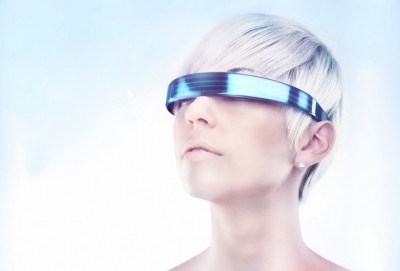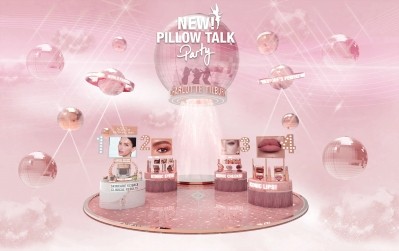Image: Getty In the second part of our skin care and technology special, we address the tech that is changing beauty's biggest category at lightning speed…
The first part of our skin care and technology special explored the use of AI across the category. Now we will examine the other areas of technology that are currently changing the way we both create and sell skin care products, including AR, at-home-use beauty devices and virtual brand experiences.
Use of Augmented Reality (AR)
The application of AR in the skin care industry has proven beneficial in allowing customers to gain an immersive shopping experience. By integrating digital technology into physical customer journeys, including features like AR try-ons and avatar try-ons, brands can show shoppers how products would look on them without trying on the physical item.
“Beauty brands are now offering Augmented Reality try-ons, allowing shoppers to endlessly experiment with different products and shades,” revealed McNicol.
“This approach not only enhances consumer engagement but also reduces the risk of dissatisfaction. Beauty products often have stricter return policies than other categories due to hygiene concerns, making it harder for customers to return products that don’t suit them. To succeed in the post-COVID online market, where shoppers increasingly buy without visiting stores, brands have had to innovate. AR try-ons give consumers the confidence to make informed choices, ensuring they’re satisfied before they click “buy.”
“Dior Beauty has also created a new online consultation and virtual AR make-up try-on in collaboration with video commerce start-up Bambuser and AI-powered skin analysis service Perfect Corp,” continues Houghton. “The highly personalised service offers live-streaming online consultations, which then lead consumers to a live shopping platform. These innovations show that beauty brands are no longer just dipping their toes into beauty tech but are eager to find sophisticated solutions to consumers’ problems.”
This approach is also being used in the skin care category. For example, a Paris-based tech company Cydolia, which specialises in 3D acquisition, analysis, and reconstruction of skin properties, has been working alongside leading industry players such as L’Oréal Group, Chanel, and Beiersdorf in this space.
Most recently, the company released a video that showcases its 3D simulation and visualisation technology, based on clinical trials data, which it said can help cosmetic brands “precisely showcase the benefits of their products across optical, metric, and mechanical skin parameters.”
The video gives detailed visualisations – such as zoomed-in views of wrinkle reduction, acne diminution through heatmaps, and the firming mechanical effect of a cream – which are customisable and can be applied to the digital double of a volunteer or a non-existing customisable digital human. This can include different phototypes and skin types, along with other specific attributes that are compliant with the clinical trials.

Use of at-home beauty devices
According to research from P&S Intelligence and the Future Laboratory, the global home-use beauty device market value is set to rise at a CAGR of 25.1% between 2020 and 2030, with new products enabling consumers to incorporate salon professional treatments into their at-home regimes.
Home care devices have become increasingly innovative, with products such as NIRA Pro, which uses innovative laser technology and claims to be the largest and fastest, painless at-home laser to reduce fine lines and wrinkles in minutes, as well as brands like Lyma, which straddle the boundaries between nutricosmetics and at-home-use devices, with its blend of supplements, epigentic topical products and laser treatments.
“Consumers are much more educated on their skin and what is needed to really make a difference, meaning there has been a rise in demand for at-home tools that can rival the results of in-clinic treatments,” said David Bean, Founder of Nira Skin.
“Clinical laser treatments are revered for their incredible results but can be expensive (averaging £3,000+ per treatment course), time-consuming and have long downtime periods. NIRA lasers offer innovative technology for results that are as transformative as in-clinic treatments without the pain, downtime, or expense. NIRA Pro and Precision lasers can be used daily, on their own or alongside clinical treatments.”
Silk’n 7 is another brand bringing increasingly advanced technology to the at-home skin care devices market.
The global leader in professional aesthetic Intense Pulsed Light (IPL) devices made for at-home use combined galvanic and optical energy to create the patented eHPL™ Technology.
“What sets the Silk’n 7 apart is the Skin Color AutoAdapt technology, an intelligent feature that reads your skin tone before every flash, automatically adjusting to ensure personalised, safe, and optimal treatment every time, so there is no guesswork,” explained Isabeau van Maastricht from Silk’n 7.
Virtual brand experiences and digital personas
“Another trend to highlight when considering the future of beauty is the rise of virtual brand experiences and digital personas,” McNicol predicted.
“Brands like Charlotte Tilbury, Lush, Too Faced, and Clinique are leading the way here. These experiences take many forms, from virtual stores and events to virtual try-ons. For example, Charlotte Tilbury’s ‘Charlotte’s Beauty Realm’ allows shoppers to interact as glamorous avatars while receiving expert beauty tips from the brand’s team.
In fact, Kantar’s research shows that 28% of our beauty panelists are interested in virtual events. This trend is particularly significant for younger generations.
“According to our research, 68% of Gen Z consumers have created avatars, compared to 41% of the general population, showing a growing interest in immersive, personalised brand interactions,” concluded McNicol.


